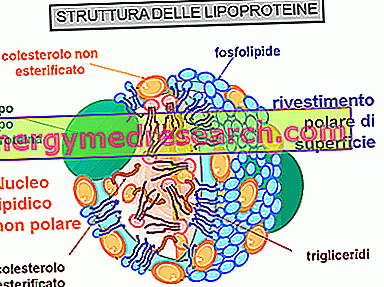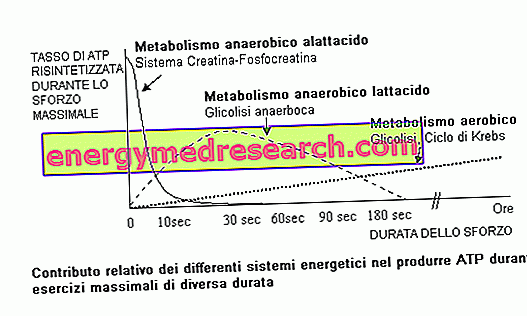Cardiovascular Risk Marker
In several studies, the ApoB / ApoA1 ratio has been shown to be a more significant cardiovascular risk factor than the classic ratio of LDL cholesterol to HDL cholesterol.
For example, in a 2008 study published in the prestigious journal The Lancet *, the ApoB / ApoA1 report presented a very high PAR for acute myocardial infarction, equal to 54% and higher than that of the C-LDL / C-HDL ratio (37%) and the C-total / C-HDL ratio (32%). These differences proved to be consistent in all ethnic groups, men and women, and in all ages.
Identifying subjects with cardiovascular risk more accurately translates into better opportunities for early intervention and prophylactic / therapeutic success. This is why in the near future the ApoB / ApoA1 report will presumably find more and more space in the clinical field.
Lipoproteins and Apoproteins
As is known to most people, cholesterol circulates in the blood inside lipoprotein aggregates (composed essentially of lipids of various nature and proteins). Based on the percentage of the various components and their size, these aggregates - generically called lipoproteins - are classified into VLDL, LDL, IDL and HDL.
The liver incorporates cholesterol in VLDL, precursor molecules of IDL and LDL: all these molecules are characterized by the presence of Apoprotein ApoB100 and serve to distribute cholesterol to various tissues. HDL lipoproteins are instead necessary for the reverse transport of cholesterol, from tissues to the liver (where it is recycled or "eliminated" with bile) and therefore have a preventive action on the deposit of cholesterol in the arteries (high levels of HDL are a factor protective for cardiovascular diseases). HDL lipoproteins are characterized by the presence of Apoprotein ApoA1 .

The apoproteins have the task of stabilizing the entire particle, activating the enzymes responsible for their metabolism and acting as a recognition site for cellular receptors responsible for capturing lipoproteins and removing them from the circulation.
Like lipids, apolipoproteins do not identify a precise lipoprotein particle. The same apoprotein can in fact be present, although in different concentrations, in lipoproteins belonging to different classes (see table). However, almost all of the ApoA-I are present on HDL lipoproteins, as well as almost all of the APOB-100s derive from LDL.
| first name | length amino acids | lipoprotein expression | function |
| ApoA-I | 243 | CM, LDL, HDL | structural, LCAT activator, HDL receptor ligand |
| ApoA-II | 77 | HDL | structural, increases the activity of hepatic lipase |
| ApoA-IV | 377 | CM, HDL | unknown, possible role in fat absorption |
| ApoB-48 | 2151 | CM, CM remnants | structural, secretion of the CM |
| ApoB-100 | 4536 | VLDL, LDL, IDL, | structural, secretion of VLDL, ligand for the LDL receptor |
| ApoC-I | 57 | HDL, CM, VLDL | LCAT activator |
| ApoC-II | 79 | HDL, CM, VLDL | lipoproteinlipase activator |
| ApoC-III | 79 | HDL, CM, VLDL | inhibition of triglyceride-rich lipoprotein removal |
| ApoE | 299 | HDL, CM remnants, IDL | ligand of the LDL / IDL receptor and of the CM remnants receptor |
Why measure the APOB / APOA1 Report
As we have seen, class B apoproteins are not exclusive of LDL cholesterol; for this reason their plasma concentrations also depend on the presence of other lipoproteins with an atherogenic potential, in this case VLDL and IDL. On the basis of this assumption it is explained why in some epidemiological studies the APOB / APOA1 ratio proved to be the best predictor of cardiovascular disease compared to other traditional relationships, such as LDL / HDL, TG / HLDL or (Colsterol total - HDL) / HDL ).
- By measuring ApoB we can quantify the total amount of all atherogenic or potentially atherogenic lipoproteins carrying this apoprotein [such as LDL, VLDL, IDL and Lipoprotein (a)] and which contribute to cardiovascular risk.
- Another advantage is that the value of the two apolipoproteins is not affected by food intake. In other words, ApoA1 and ApoB do not appear to depend on the subject's fasting condition.
- Finally, the determination for clinical uses of ApoA1 and ApoB is standardized, simple and inexpensive.
Accordingly, a person who aspires to a low cardiovascular risk should have low levels of ApoB and high levels of ApoA1. By measuring both these apolipoproteins and expressing them in the ApoB / ApoA1 ratio it is possible to obtain a strong marker of cardiovascular risk.
The desirable values of the ApoB / ApoA1 ratio should be between 0.3 and 0.9. Values above 0.9 for men and 0.8 for women are a sign of a high cardiovascular risk.



